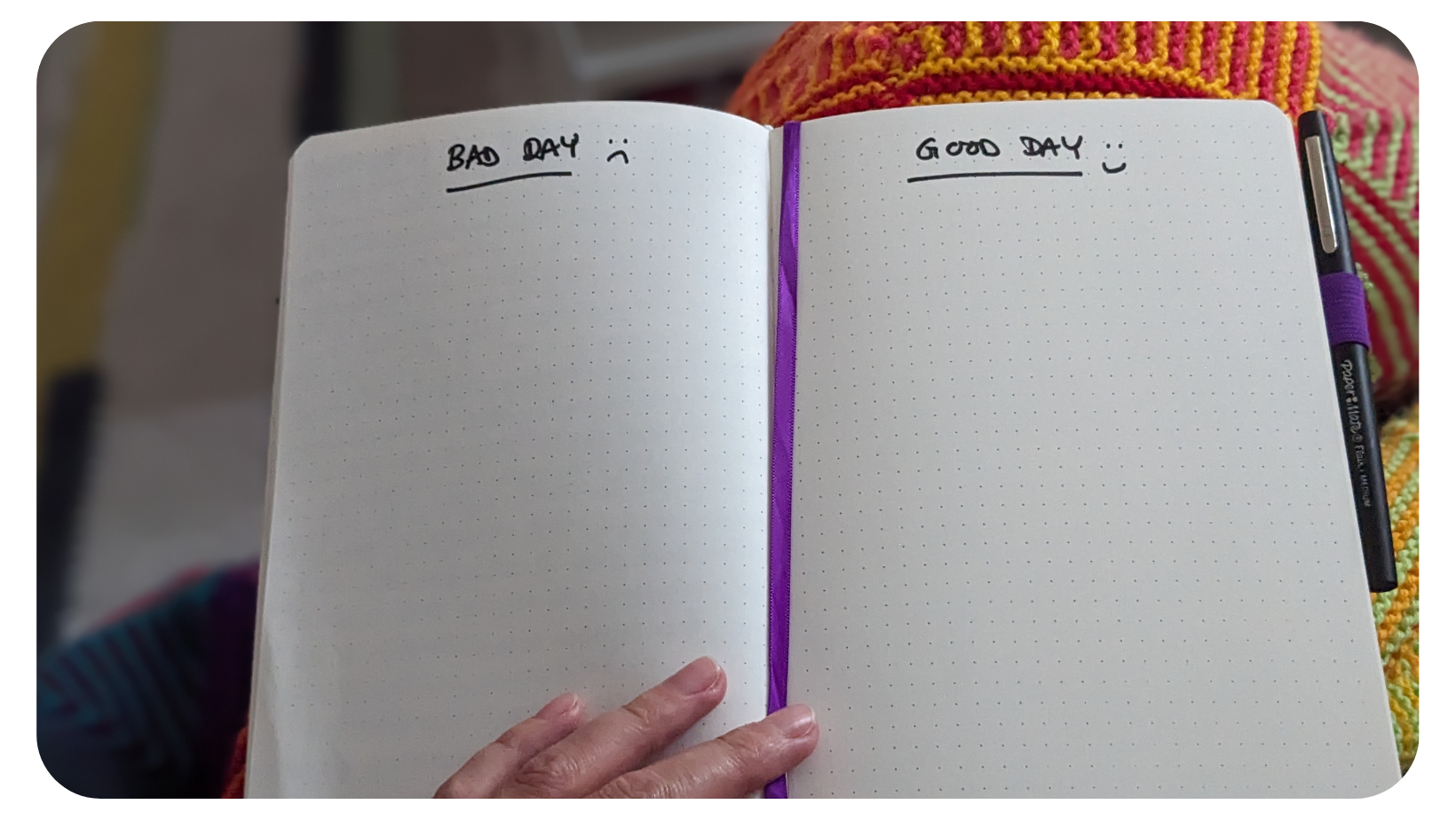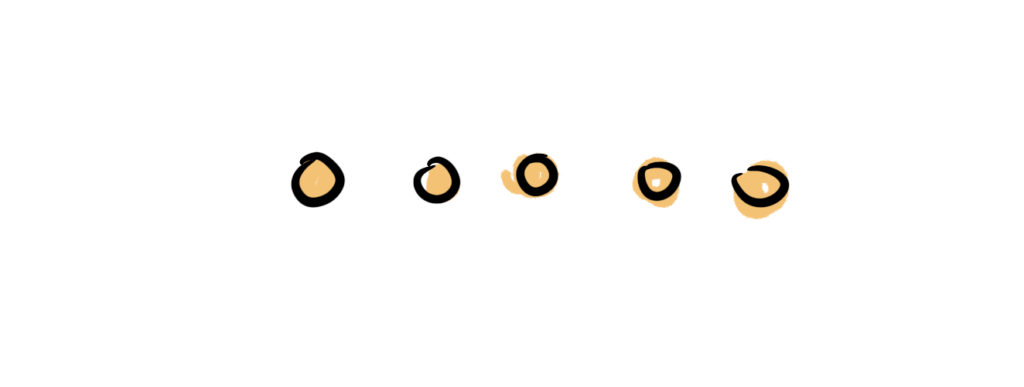
TOOL: BAD DAY – GOOD DAY
It’s easy to feel stuck and frustrated, tired of life, or lost and looking for direction. It’s easy to avoid making any decisions or big changes for fear it will be the wrong one. And it’s also easy to get drawn into either a downward spiral or make a rash decision, throwing in the towel, scrapping it all and starting from scratch, handing in your notice on a whim. The good news is that you can avoid stasis, spirals and rash decisions with a simple tool that you can use right now – all you need is some paper and a pen.
USE THIS TOOL WHEN:
HOW IT WORKS:

HOW TO DO IT:
1. Prepare your page and your mind.
- Take a piece of paper or a notebook.
- Draw a line vertically down the centre of the page.
- On one side of the line, write ‘bad day’.
- On the other side of the line, write ‘good day’.
Take some time to reflect on days that you have really enjoyed, and days that you have really not enjoyed. These might be relatively recent days, or you may go back to earlier memories. For example, The day I graduated. The first day after I left that job I hated. That holiday with my siblings. When I visited my friend in Portugal. And so on. Under each heading, write a couple of short descriptions:
Bad day: Days that you can remember that you really didn’t enjoy. They felt like a chore, they were really boring, and / or you actively disliked them. You were miserable!
Good day: Days that you can remember that you really enjoyed. You had a laugh! You learned something. You had a lot of fun. You felt content.
2. Deep dive, capturing some key elements of ‘Bad Days.’
Turning your attention to the bad days, write down some key features of what makes a day bad. You’ve already jotted down some ideas for days that fit under this heading. Capture some detail about those experiences, using these questions to help you:
- What did you hate about these days?
- How did you start the day?
- Who did you spend it with?
- What were you wearing?
- Where were you?
- What did you eat?
- Were you mostly inside, or outside?
- How did you feel?
Once you have captured all the detail you want, take a moment to review what you have. When you think about having a day that includes some or all of the things you have written down, how do you feel? Jot down a few emotions at the bottom of your list, and write a score out of 10 next to them. Then, see how you can make those scores even higher, using the following prompts:
- What would make this day even worse? What do you find really, really boring?
- What’s the worst possible way to start the day that you can imagine – that would leave you feeling grumpy and fed up?
- What would make you even more miserable?
3. CAPTURE KEY ELEMENTS OF ‘Good Days.’
Now, turning your attention to the good days on your list, follow the same approach of capturing some common features of good days:
- What did you enjoy about these days?
- How did you start the day?
- Who did you spend it with?
- What were you wearing?
- Where were you?
- What did you eat?
- Were you mostly inside, or outside?
- How did you feel?
Once you have captured all the detail you want, take a moment to review what you have. When you think about having a day that includes some or all of the things you have written down, how do you feel? Jot down a few emotions at the bottom of your list, and write a score out of 10 next to them.
What would it take to shift those scores even higher? To help you, you can go back to past experiences or you can start to dream… think about how you’d really like things to be.
- How would you love to start the day?
- Who would you love to spend time with?
- What’s your favourite thing to do before you go to bed?

HOW TO USE YOUR LISTS:
You have captured the kinds of days you’d like to have more of, and the kinds of days you want to have less of. Perhaps you feel a bit miserable now, having written out the most rubbish day you could think of. That’s ok; now you’re going to use what you’ve captured to make some changes. You’ve captured the worst case scenario so that you can now plan to make sure it doesn’t happen.
You can use your completed tool in different ways:
SMALL WAYS
- Add in something small to your morning routine – something from your ‘Good day’ list that takes 5 minutes or less, and do it before or after brushing your teeth.
- Meditate on your ‘good day’ list, immersing yourself in all the different elements you have captured.
- Post your ‘good day’ list up somewhere you will see it often.
- Consider your daily activities, and identify something that turns up on your ‘Bad day’ list. Stop doing that activity.
BIG WAYS
- Considering some new job options? Look at your good day / bad day list and score each job on its potential to lead to more good days, and its potential to lead to more bad days.
- Collect images based on your ‘good day’ list and create a collage that you can look at every morning.
- Bring your lists to the Design for Life programme so that we can create a plan that moves you towards your dream (based on having more good days) and avoid your nightmare (based on having fewer bad days).
HUNGRY FOR MORE?
If you got a lot out of this activity and you’d love some more, or if you made some progress and then got stuck, check out Design for Life. In this tailored, one to one programme we will spend up to six months working together using carefully placed questions and simple activities like this to find a sense of purpose and create more delight for yourself. We’ll use what you discover to create a roadmap and then work together to make it happen.
Whether you’re stuck and frustrated, tired of life, or lost and looking for direction then Design for Life can help you to get clarity, find focus, and take actions to get things moving. Unblock your energy, take control of your own wellbeing, and find a new sense of freedom!
